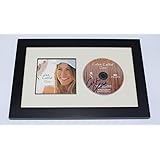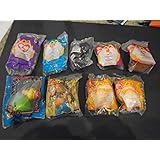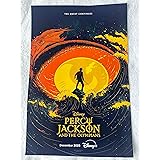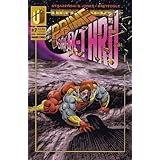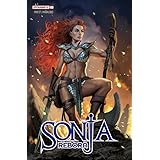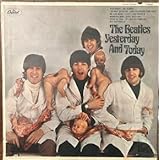Have you ever looked at your Western dresses and wondered how they could get a fresh, new life, perhaps with an Indian twist? The video above offers a glimpse into the creative world of transforming everyday attire. Often, a simple change in accessories or layering can redefine an entire look, especially when one is interested in styling Western dress in Indian wear.
The beauty of fashion lies in its versatility, allowing for innovative combinations that reflect personal style and cultural appreciation. Fusion fashion, a trend that artfully blends elements from different cultures, has become incredibly popular. It offers an exciting opportunity to maximize your existing wardrobe while creating unique, eye-catching ensembles. This approach is not only stylish but also a sustainable way to enjoy fashion, reducing the need for constant new purchases.
Embracing the Art of Fusion Fashion: Why It Works
The concept of merging different styles is particularly appealing for several reasons. Primarily, it allows for a diverse wardrobe without extensive spending. A single Western dress can be presented in numerous ways, suitable for various occasions, from a casual outing to a festive gathering. Furthermore, this type of ethnic styling is a testament to creativity; it encourages experimentation and personalization, resulting in outfits that truly stand out. It is often observed that such a blend can bridge cultural gaps, creating a contemporary look that respects traditional aesthetics.
Essential Elements for Styling Western Dress in Indian Wear
Transforming a Western dress into an Indian-inspired outfit is achieved through thoughtful additions and clever layering. The key is to select elements that complement the dress while infusing it with traditional Indian charm. Here are some fundamental approaches:
1. The Transformative Power of the Dupatta
A dupatta is perhaps the most iconic and versatile accessory in Indian wear. It is capable of instantly changing the character of a simple dress. When a Western dress is paired with a beautifully embroidered, sequined, or even a plain silk dupatta, an immediate ethnic shift is achieved. Various draping styles can be explored, from a classic over-the-shoulders drape to a more elaborate side-swept or pleated style. The fabric and embellishments of the dupatta should be considered, as they significantly influence the overall feel of the outfit. For instance, a heavy brocade dupatta can elevate a plain dress for a formal event, while a lightweight cotton one adds a casual, chic vibe.
2. Thoughtful Accessorizing with Indian Jewelry
Accessories play a crucial role in enhancing any outfit, and this is especially true for fusion fashion. Indian jewelry, known for its intricate designs and vibrant colors, can profoundly impact the look of a Western dress. Jhumkas (bell-shaped earrings), kadas or bangles, and statement necklaces are often incorporated. A simple dress can be made festive with the addition of silver or gold-toned ethnic jewelry. The choice of footwear also contributes significantly; mojris or juttis, traditional embroidered shoes, can complete the Indian aesthetic, as can embellished sandals or kolhapuris. Even a potli bag, a traditional drawstring pouch, can be carried to tie the whole look together.
3. Strategic Layering for Ethnic Depth
Layering is an effective technique for adding dimension and an Indian touch. An embroidered jacket or a short, embellished waistcoat can be worn over a Western dress. These pieces often feature traditional Indian motifs, mirror work, or intricate thread embroidery, providing a rich textural contrast to a simpler dress. Long, flowing shrugs with ethnic prints can also be utilized, offering a modern yet traditional silhouette. The choice of layering piece should harmonize with the dress’s fabric and cut, ensuring a cohesive and elegant appearance.
4. Incorporating Indian Bottom Wear
For shorter Western dresses, pairing them with traditional Indian bottom wear can be an unexpected yet stylish move. Churidar leggings or even palazzos worn underneath can transform a dress into something resembling a kurta-set. This approach adds coverage and introduces a traditional element to an otherwise contemporary garment. The color and fabric of the bottom wear should be carefully selected to ensure a balanced and appealing look.
5. Completing the Look with Hair and Makeup
The final touches of hair and makeup are instrumental in achieving a fully integrated fusion look. A small bindi, applied to the forehead, is an instant indicator of Indian tradition. Hairstyles can range from a neat bun adorned with gajra (flower garland) to braided styles or loose waves with ethnic hair accessories. Makeup can be kept subtle with a focus on kohl-lined eyes or enhanced with bolder colors that complement the outfit’s palette. These details, though seemingly small, contribute significantly to the overall ethnic ensemble.
Selecting the Ideal Western Dress for Transformation
Not every Western dress is equally suited for Indian styling. Dresses with simpler silhouettes and minimal embellishments often serve as the best canvases. A-line dresses, maxi dresses, or shift dresses are frequently chosen due to their clean lines and versatility. Fabrics such as cotton, rayon, or plain georgette are generally preferred as they readily accept ethnic additions without clashing. It is important that the dress itself does not overpower the Indian elements being introduced; rather, it should provide a neutral base that allows the traditional accents to shine.
Occasions Perfect for Your Fusion Creations
One of the great advantages of styling Western dress in Indian wear is the adaptability of the resulting outfits. Such fusion looks are perfectly suited for a variety of occasions. They can be worn to family gatherings, smaller festive celebrations, or even casual outings where a touch of elegance is desired. For semi-formal events, a well-accessorized fusion outfit can be both comfortable and distinctly fashionable. This approach allows for a playful exploration of identity, merging global fashion trends with deeply rooted cultural aesthetics.



